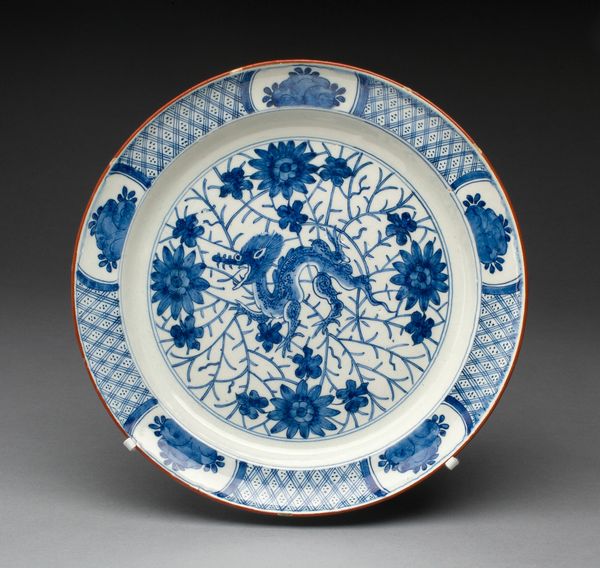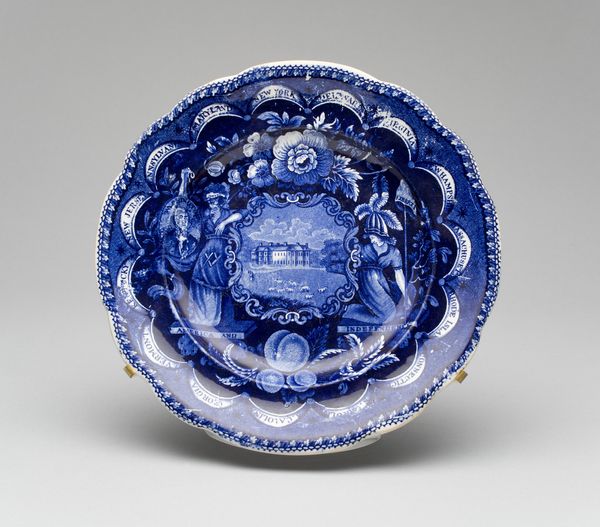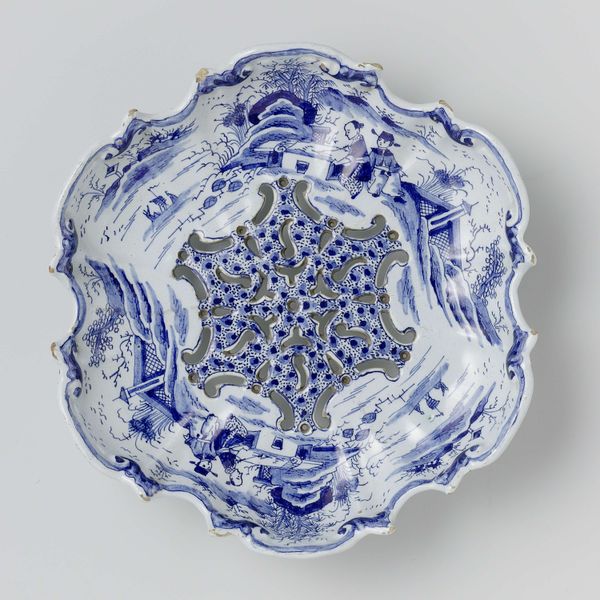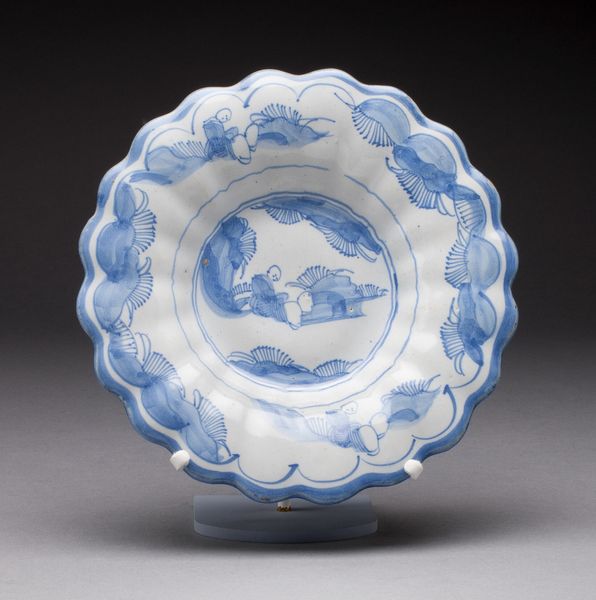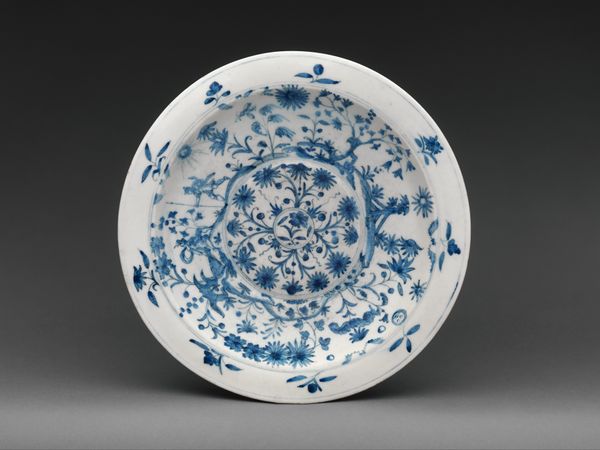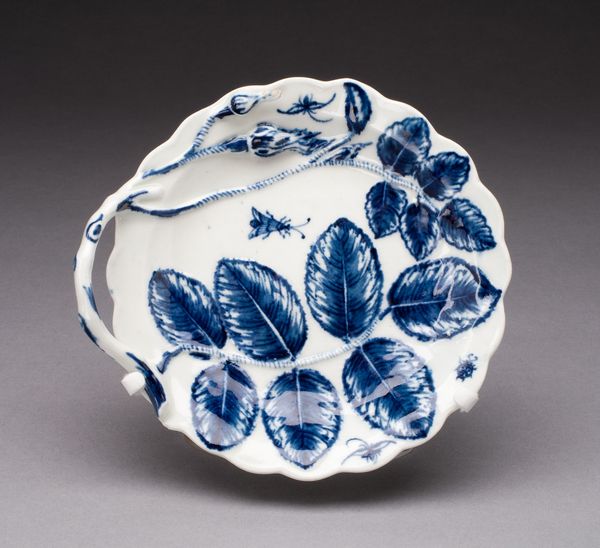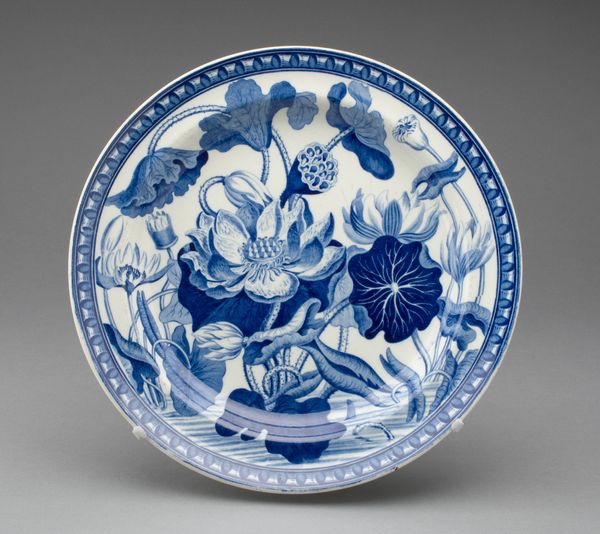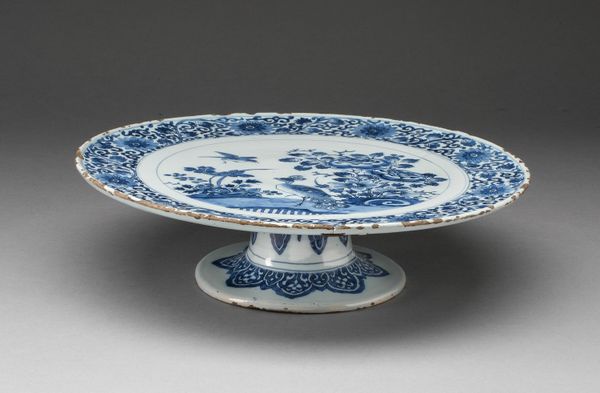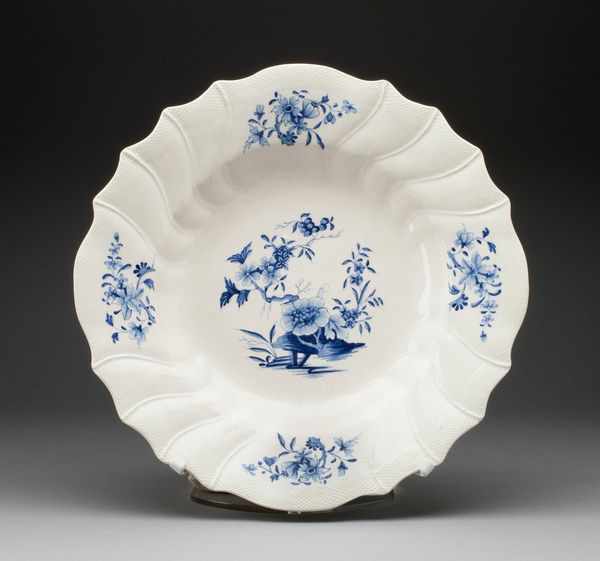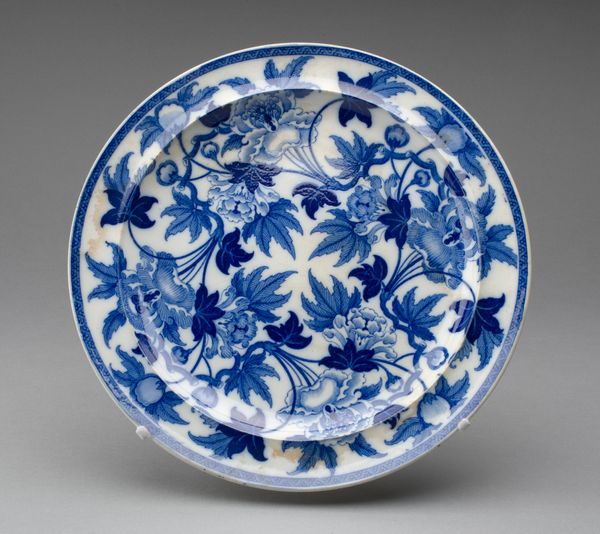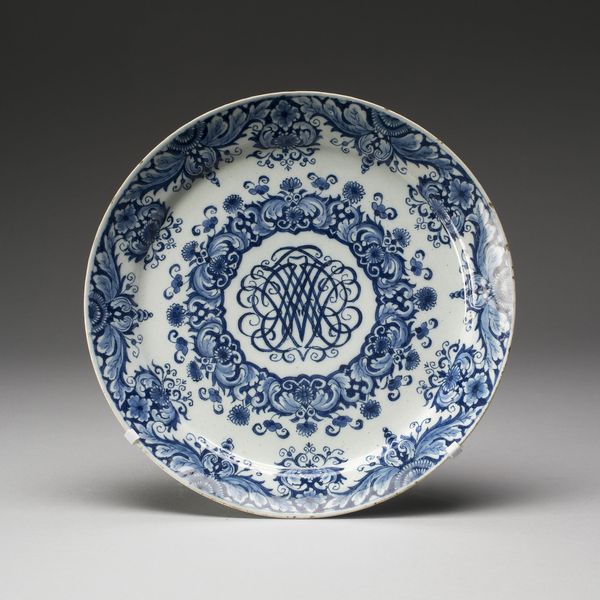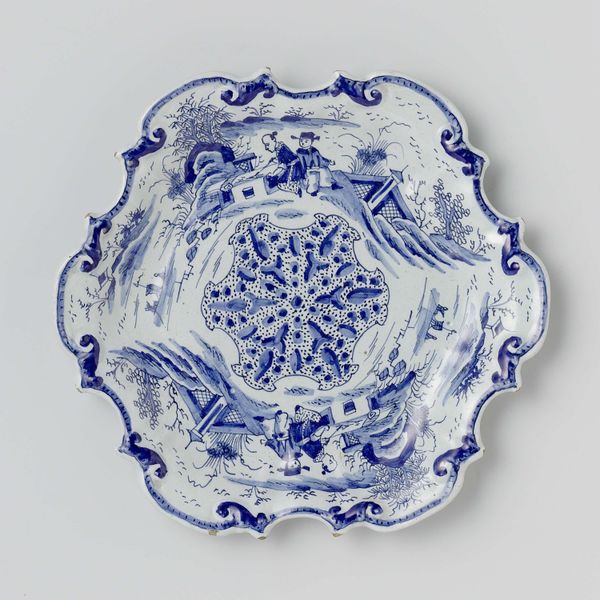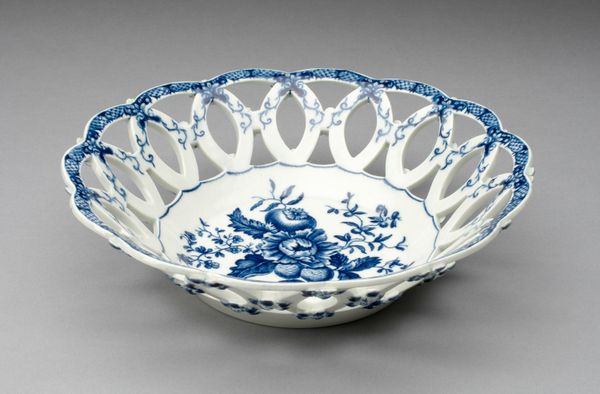
ceramic, porcelain
#
decorative element
#
ceramic
#
porcelain
#
orientalism
#
ceramic
Dimensions: Diam. 17.6 cm (6 15/16 in.)
Copyright: Public Domain
Editor: So this porcelain plate, made around 1770 by the Worcester Royal Porcelain Company, is so delicate, almost ephemeral. I am struck by the way the cobalt blue design, all these little blossoms and leaves, practically floats on the white porcelain. How does this plate fit into its historical context? Curator: This piece exemplifies the 18th-century phenomenon of Orientalism, particularly the Western fascination with Asian ceramics. These porcelains were luxury goods, markers of status. The imitation of Asian designs became incredibly fashionable. How do you think the English manufacturers’ interpretations differed from authentic Chinese or Japanese porcelain of the time? Editor: I guess this feels a bit more…decorative, maybe? Less functional. There’s something almost precious about the design that doesn’t strike me as particularly practical. Curator: Exactly. It highlights the public role of art. These plates weren’t just for eating off of; they were displays of wealth and taste. The "exotic" design contributed to the owner’s social image. Consider the power dynamics inherent in appropriating artistic styles from another culture. Do you see that echoed in collecting practices today? Editor: Definitely! It's interesting to think about the cultural impact beyond just its beauty. I see now how collecting could signal status then, and how these collections could become sites of complex histories. Thank you for this discussion, I'm inspired to learn more. Curator: Likewise! Analyzing these beautiful objects is one small piece in analyzing a broader range of issues.
Comments
No comments
Be the first to comment and join the conversation on the ultimate creative platform.
